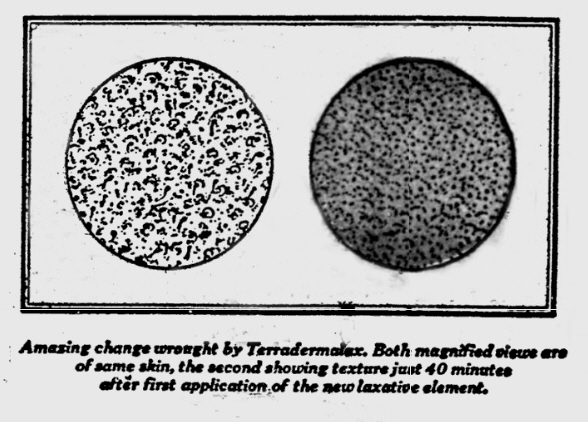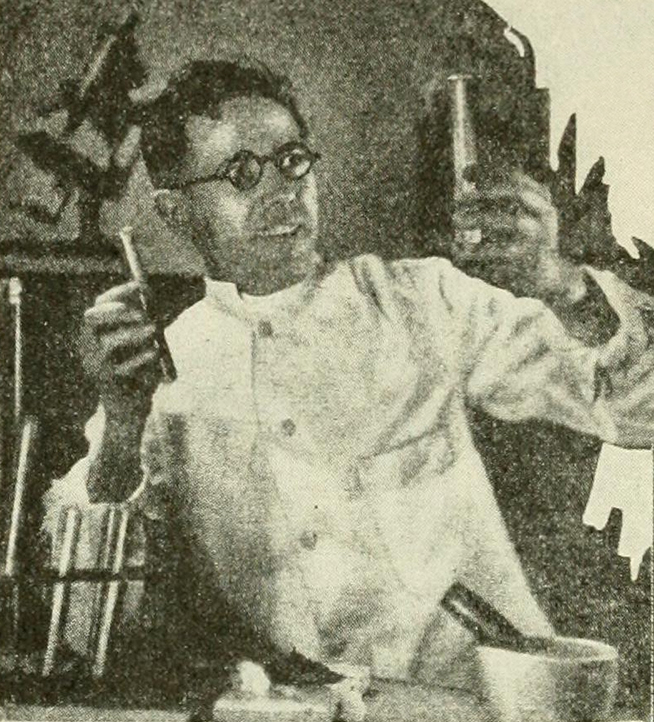Source: The Pittsburgh Press, 11 March 1923
.
.
Why, when a woman is 30, do her blushes no longer show? How does a skin grow dull and unlovely while the eyes are still clear and sparkling? Science has learned the reason, and – glorious news! – a painless, pleasant way to correct it in 60 minutes!
Count this faded 30-something in! The above quotation is from a full-page advertorial in the Pittsburgh Press, 9 April 1922. The ad was presented as a journalistic report by one William R Durgin, who had supposedly investigated the new miracle product and verified the manufacturer’s claims.
Terradermalax, as it was originally called before the hyphens were added in 1923, was described as a ‘laxative’ for the face – the idea was that it caused the skin to expel all its waste products, clearing the pores of impurities and leaving the complexion as smooth as a child’s. The product name was not just a brand, either – it was presented as the scientific term for the ‘element’ discovered by young English chemist M. J. McGowan.
In a precursor to our modern ‘here comes the science bit’, Durgin revealed that the cause of a dull complexion was occlusia (clogged pores) and he used the following rather vague before-and-after picture to show how Terradermalax transformed the skin.
Oddly, he says ‘this reproduction of a microscopic slide shows the same skin before and after the first application.’ Did the person squeeze their whole face onto a microscope slide, or did someone cut a piece off, examine it, stick it back on for the treatment and then remove it again?
Some ads showed the inventor contemplating his discovery in a dramatic ‘Look, I’m a scientist!’ pose. The writers of the Annual Reports of the Chemical Laboratory of the American Medical Association (1923) compared him to the comedian Harold Lloyd, whose film, Safety Last! came out that year.
The 1922 advertorial stated that McGowan was 31 years old, but had 10 years’ experience as a dermatologist. Annual Reports claimed that he worked ‘in a subordinate capacity in the soap and fertiliser departments of the Chicago stockyards.’
The product’s composition didn’t hold any surprises – the A.M.A.’s analysis showed it to be clay and water, much like other face masks of the time. Where it fell into the realms of quackery was in the claims about miraculous effects and the idea that McGowan had discovered a mysterious new substance. Anyone could buy some kaolin cheaply from a chemist’s shop and make a similar mixture that would have a cleansing effect and give them the chance to sit down and relax for a while – but this wouldn’t have the psychological boost of treating oneself to a potentially miraculous product. As Annual Reports said:
The only thing you will lack is the mental uplift produced by reading the ineffable bosh published by the complexion clay exploiters.
.
.






Thanks for the mental uplift. I wonder if the ineffeable bosh about skin laxatives inspired Flanders and Swann?
http://www.youtube.com/watch?v=kN0WPwFD9is